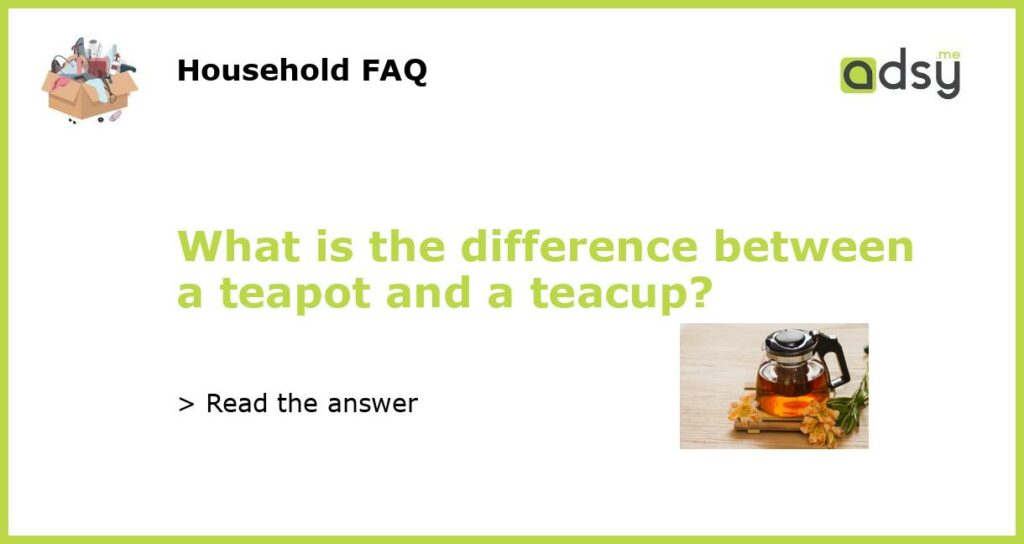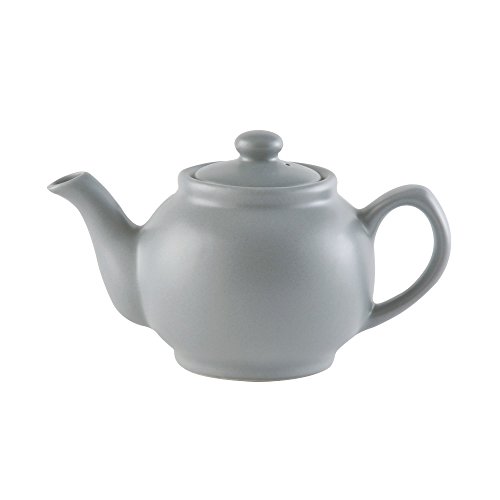The Basic Definition
A teapot and a teacup are both items used for serving and drinking tea, but they differ in their purpose and design.
A teapot is a container with a handle, spout, and lid, specifically designed for brewing and serving tea. It is typically larger in size than a teacup and often made of materials like ceramic, porcelain, or glass. Teapots have a built-in infuser or strainer that allows loose tea leaves or tea bags to steep in hot water, extracting the flavors and aroma.
On the other hand, a teacup is a small cup without a handle, used for drinking tea once it has been brewed in a teapot. Teacups are usually made of the same materials as teapots and may include delicate patterns or designs. They are smaller in size, allowing for comfortable sipping while ensuring the tea stays warm.
Serving Function and Capacity
Teapots are primarily used for brewing large quantities of tea that can be shared among multiple people. They are designed with a larger capacity, typically holding several cups of liquid. Teapots often have wide openings to accommodate tea leaves or bags and allow easy pouring.
On the other hand, teacups are designed for individual use and have smaller capacities to hold a single serving of tea. They are usually smaller in size and may be accompanied by saucers for added convenience. Teacups offer a more intimate and personal tea-drinking experience, allowing the flavors and aromas to be enjoyed by one person at a time.
Design Features
While both teapots and teacups come in various designs, there are some notable differences in their features.
Teapots are often designed with a long handle for easy gripping and pouring, a pronounced spout to control the flow of the brewed tea, and a lid to retain heat during steeping. Some teapots also have a built-in infuser or strainer to separate the tea leaves from the brewed liquid.
Teacups, on the other hand, usually lack a handle and have a small rounded shape to fit comfortably in the hand. They may feature delicate patterns or designs on their outer surface, adding to the aesthetic appeal. Some teacups also have a small indentation or lip on the rim to prevent spills while sipping.
Cultural Significance
Teapots and teacups hold cultural significance in different parts of the world, representing traditions and customs associated with tea consumption.
In Chinese and Japanese cultures, the teapot plays a vital role in traditional tea ceremonies. These ceremonies focus on the preparation, serving, and drinking of tea as a form of art, symbolizing harmony, respect, and tranquility. Tea masters carefully select teapots that complement the specific type of tea being served, considering factors like material, shape, and aesthetics.
In Western cultures, teacups are often associated with afternoon tea or high tea rituals. These traditions involve serving tea accompanied by small sandwiches, pastries, and scones. Teacups are chosen for their elegance and may be part of a matching set with saucers and side plates.
Personal Preference and Usage
Ultimately, whether to use a teapot or a teacup depends on personal preference and the context of tea consumption.
Teapots are ideal for social gatherings and larger groups of tea drinkers, allowing for multiple servings to be poured from a single vessel. They are well-suited for brewing loose-leaf tea, herbal infusions, or specialty teas that benefit from longer steeping times.
Teacups, on the other hand, provide an intimate and personal tea enjoyment experience. They are suitable for enjoying a single cup of tea at home, at work, or during quiet moments. Teacups can be used with both brewed tea from a teapot and tea bags, offering flexibility in tea preparation.
In conclusion, teapots and teacups differ in their design, purpose, serving capacity, and cultural significance. Whether you prefer the communal experience of sharing tea from a teapot or the personal enjoyment of sipping from a teacup, both items contribute to the rich and diverse world of tea-drinking.






